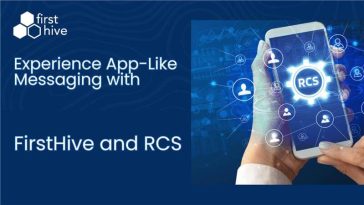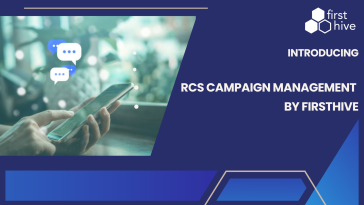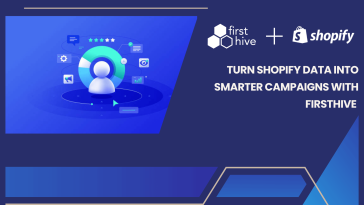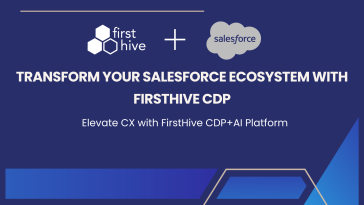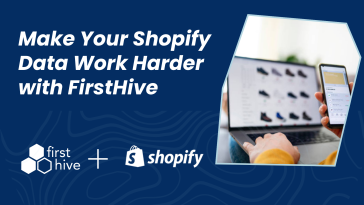Have you ever stepped into a store’s trial room feeling very comfortable in clothes that don’t fit you? I guess that would not happen. It’s the same scenario while validating the need for customer segmentation. It’s been estimated that marketers who send segmented campaigns see as much as a 760% increase in revenue. There are more reasons why customer segmentation is a must-have in your marketing strategy.
What is Customer Segmentation?
Customer segmentation is a process by which customer data is classified into similar groups to achieve a common objective. Segmentation can happen based on demographic data, psychographic data, behavioral data, geographic data, customer journey data, and many more.
Customer segmentation helps marketers target a specific group to achieve a specific result. Such close targeting optimizes the money spent. Without customer segmentation, you may end up sending the wrong message and selling the wrong product to the wrong group of people.
Intuition is not enough: Why is it important to segment customers?
Segmentation is based on proven data. That means it leaves no room for guesswork. While being intuitive is awesome, you need data to back your decisions and device-relevant campaigns that convert well.
- Reach out to a diverse audience with the same need for your product.
- Optimize budget spending to get the most out of a homogenous group of the target audience.
- Create a better brand resonance.
- Surface promising or untapped business opportunities
- Understand the most and least engaged customers at a granular level.
To achieve granular segmentation, you need to use an exclusive combination of dimensions and parameters. Such a combination is relevant to the objective of the campaign. This helps us to understand different types of customer segmentation.
Types of customer segmentation
As mentioned earlier, some of the common ways to segment customers are based on data coming from demographics, psychographics, geography, behavior, and customer journeys.
Demographic segmentation
Demographic segmentation is when customers are categorized by certain socioeconomic factors, such as:
- Job title
- Age
- Gender
- Religion
- Marital status
- Social security number
- Urbanization
Psychographic segmentation
Psychographic segmentation looks at the attributes and characteristics that form our personalities. A common example is buyer personas, which create imaginative backstories about potential customers (combining demographic data, like job title, with more psychographic data like motivations, preferred method of communication, and so on). Examples of psychographic segmentation include:
A person’s interests
- Values
- Opinions
- Habits
- Buyer preferences
- Motives
Geographic segmentation
Geographic segmentation is when consumers are organized into groups based on their location. This could be as broad as a region (e.g. North America) or a specific city (e.g. Boston). Geographic segmentation can be done by:
- Country
- Time Zone
- State
- City
- Zip code
- IP address
- Dynamic location
Behavioral segmentation
Behavioral segmentation provides insights into how a person chooses to engage with your business. Some examples of criteria for behavioral segmentation include:
- Pages viewed
- Requesting a demo
- Items that were added to the cart
- Cart abandonment
- Completing a purchase
Customer Journey Segmentation
Customer Journey segmentation is based on which point or place of journey the prospect or customer is going through. For eg:
- Discovery and Search
- Pre login
- Post login
- Referral coupons
- Word-of-mouth referral
- Competitive comparison
What do you do with Customer Segments?
Some of the most common use cases that use customer segments as a foundation is as below:
- Personalization of marketing campaigns and product experience
- Product usage and product development enhancements
- Raw data and inputs to make new business decisions
- Customer-product fit
- Product-market fit
FAQs
What is the purpose of customer segmentation?
Customer segmentation helps you gain unique insights about a specific target group. It helps marketers gain a deeper understanding based on the segregated dimension and common parameters. Customer segmentation allows businesses to better connect with customers by tailoring their communications, with the added benefits of improving customer experiences, optimizing ad spending, and more.
How to define customer segments?
Build a criterion to meet your objective. Define which type of dimension you want to use. Slice the segment based on different categories: demographic (e.g. a person’s age, gender, etc.), psychographic (e.g. interests, beliefs, and personality of an individual), geographic (e.g. where a person lives), behavioral (e.g. the actions a person has taken with your business), or customer journey (before login, after purchase, while check out and so on).
Can customer segmentation be automated?
FirstHive’s Customer Data Platform is built on machine learning algorithms that are applicable to customer segmentation. The platform can auto-segment into intelligent cohorts that come as recommendations to the marketer who is using the system. These segments can also be fed into the campaign automation system of your choice. These segments come as enriched data inputs for the campaigns to be executed in real-time.



